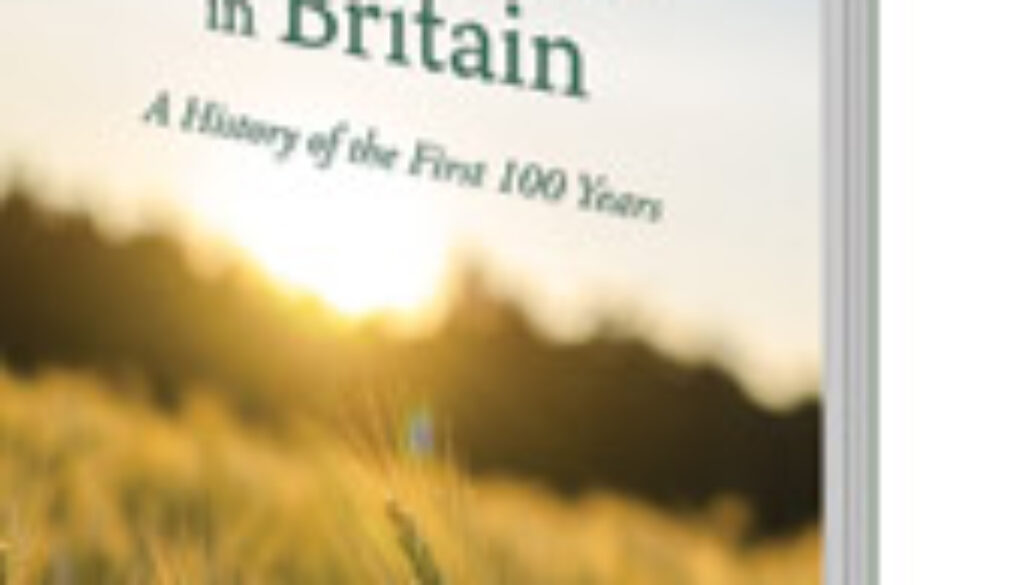The Biodynamic Movement in Britain
The Biodynamic Movement in Britain: A History of the First 100 years
Bernard Jarman
(Floris Books)
This book has been released in time to celebrate 100 years since Dr Steiner gave his seminal lectures. How has that impulse taken root in the UK?
The author sets the scene with details about the Koberwitz course. We are offered interesting sketches of the creation of the Experimental Circle and the brief it received from Dr Steiner and set itself for grounding the lectures in practice. I was intrigued that a cast was made of Count Keyserlingk’s hand when his death mask was taken and both are somewhere in the UK!
The author outlines the first foot-fall of BD in the UK via the efforts of Daniel Dunlop and Eleanor Merry who organised and part-sponsored the 1928 ‘World Conference on Spiritual Science’. Count Keyserlingk, busy with other commitments, sent his advisor Carl Mirbt (later Mier) to give a talk on the agricultural work. Dunlop enticed Mier to set up home in the UK and to follow up his talk by guiding both the young Experimental Circle and the Anthroposophical Agricultural Foundation (AAF) which was established at the same time to support the work.
Mier nurtured the UK community to the extent that the AAF had 75 members in 1931, and 400 members by 1940. Other names prominent during this inter-war period are George Kaufman Adams, Marna Pease, & the UK’s ‘first BD farmer’, Maurice Wood.
The split in the Anthroposophical Society after Dr Steiner’s death reverberated in the splitting of the young BD movement in the UK, and it becomes clear that the 20th century history between the UK and the Germanic countries is echoed to the extent that the UK experimental circle did not formally re-engage with its continental mother until 2006!
However, it was heartening to read that there were monthly study groups after WWII to ‘re-energise the BD work’. Nevertheless, Alan Brockman could only characterise the post-war BD work as a ‘holding operation’. Attempts to stimulate life within the BD work in the UK were frequent – Peredur, IBIG, and many lecturers from across the world.
The author then moves from the external circumstances of the growth of BD to the work itself. He offers an overview of the development of the planting calendars based around the work of Elizabeth Vreede and Franz Rulni. Lili Kolisko’s work is described and presented as an interesting contrast to her contemporaries who were also working on smallest entities – but in the development of nuclear technology. Indeed, Lili’s vision of agriculture was as a ‘world problem’, one in which everyone supports each other in universal brotherhood. The contrast could not be more stark.
Further sections consider how organic agriculture developed from and alongside BD via the biographical sketches of Lord Northbourne, Eve Balfour, and particularly Maye Bruce. Ehrenfried Pfeiffer, not surprisingly, warrants a whole chapter given his pivotal role in the development of BD, particularly in the English-speaking world. Indeed, the author continues to pursue the development of the BD work in post-war UK through the characters involved, presenting insights into the lives of Pfeiffer, David Clement, Grange Kirkcaldy, George Corrin, Jimmy and Pauline Anderson, Herbert Koepf, Katherine Castelliz, Anthony Kaye and Alan Brockman.
Bernard Jarman then turns his attention from individuals to some of the initiatives which have surrounded BD in the UK. He considers Camphill, the evolution of BD training, and CSAs. He then considers how BD has weathered the recent agricultural storms of foot and mouth and mad cow disease.
Turning his gaze to the future the author ponders how BD might evolve from here. I was delighted that he resists the stream which wishes to divorce BD from its anthroposophical roots – a stream whose source he traces back to 1928 and which he considers tried to enter the UK in the 1930s.
For those interested in how we got here I can thoroughly recommend this book.
